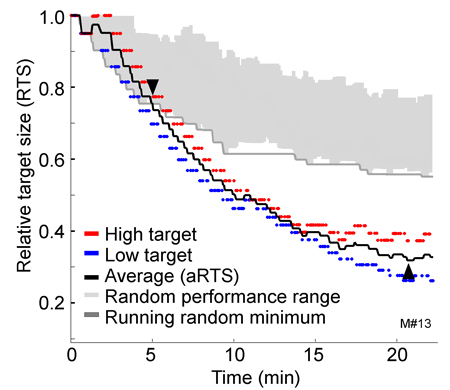URMC / Labs / Schieber Lab / Projects / Voluntary Control of Neuronal Activity
Voluntary Control of Neuronal Activity
In seminal work starting 50 years ago, Evarts initiated the study of neuronal activity during voluntary limb movements. Since then, much has been learned about how neurons in the central nervous system are related to various features of movement, but relatively little has been learned about voluntary control per se. This stems from the fact that voluntary control generally is coupled to body movement, muscle contractions, and sensory feedback. Almost paradoxically, brain-computer interfaces (BCIs) provide a direct means of examining voluntary control of neuronal activity dissociated from body movement, muscle activity, and sensory feedback.
We are using BCIs to ask:
- Does the capacity for voluntary control differ among cortical areas?
- Does voluntarily control of neuronal activity vary depending on the presence or absence of visual or somatosensory responses?
- Does voluntary control of neuronal activity vary depending on long-range connectivity of the neurons?

The relative target size (fraction of the initial target size) as a function of time is shown separately for high-target trials (red), low-target trials (blue) and their average (aRTS, black). The gray shaded area shows the range (1st to 99th percentile) of 100 simulations of random performance for the same session, and the dark gray curve indicates the running minimum (1st percentile) of this random performance range. An inverted arrowhead indicates when the actual performance became better (smaller target size) than random, and an upright arrowhead indicates when best performance (minimum actual aRTS) was achieved in this session.
We recently found that subjects can learn voluntary control of a simple BCI using only a few arbitrarily-selected motor cortex neurons. Substantial learning can occur in a single session, as illustrated in this figure from Law et al. (2014).